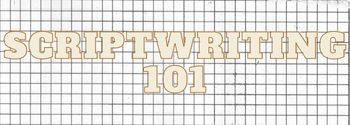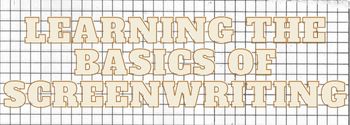When it comes to creating a standout resume, showcasing your educational background is just as important as highlighting your work experience. And for many job seekers, including their degree in their resume can often be the key to catching a recruiter’s eye. But with countless degrees and varying formats, effectively displaying this information on a resume can be a challenge. In this article, we’ll discuss the various ways to properly list, format, and highlight your degree on a resume to make a strong impression on potential employers.
When it comes to crafting a resume, the goal is to effectively showcase your qualifications and skills to potential employers. One important aspect of a resume that should not be overlooked is highlighting your educational background. This includes prominently displaying your degree.
Why is Displaying Your Degree Important?
Your degree serves as an important qualification for many job positions, especially those that require a certain level of education. It shows that you have the necessary knowledge and training in a specific field, making you a suitable candidate for the job. In fact, according to a study by Georgetown University, individuals with a bachelor’s degree earn an average of 84% more over their lifetime compared to those with only a high school diploma.
Therefore, it is crucial to effectively display your degree on your resume to stand out from other candidates and increase your chances of getting hired.
How to Write Your Degree on a Resume
When writing your degree on a resume, there are a few key elements to keep in mind:
1. Choose the Correct Format
The format of your degree listing may vary depending on your specific circumstances. Here are a few scenarios and how to properly list your degree:
- If you have a bachelor’s degree: Include your degree title (e.g. Bachelor of Science), your major, and the name of the institution where you earned your degree.
- If you have a master’s or doctorate degree: Include your degree title, major, and the name of the institution. You can also include the date of when you received your degree if it is recent or relevant to the job you are applying for.
- If you have more than one degree: List them in order of relevance to the job you are applying for, starting with the highest level of education.
- If you are currently pursuing a degree: Use the term "expected" before your graduation date to indicate that you are still in the process of completing your degree.
Remember to always use proper capitalization and punctuation when listing your degree.
2. Add Additional Information
Aside from the basic information listed above, you can also include any relevant honors, awards, or achievements related to your degree. This could include scholarships, academic recognitions, or research publications.
3. Keep it Concise
Your resume should not be too long, so it is important to keep your degree listing concise. Stick to the essentials and avoid including unnecessary details. If you have multiple degrees, consider only listing the most recent or relevant ones.
4. Use Bullets or Tables
To make your degree section more visually appealing, you can use bullets or tables to list your degrees. This will help break up the text and make it more scannable for potential employers.
5. Proofread for Accuracy
Before sending out your resume, double check for any spelling or grammatical errors in your degree listing. These mistakes can be easily overlooked but can make a negative impression on employers.
Integrating Your Degree Into Your Resume
While your degree is an important aspect of your resume, it should not be the main focus. Instead, it should be integrated seamlessly with your other qualifications and achievements. Here are a few ways to effectively integrate your degree into your resume:
1. Include It in Your Education Section
Your education section should be included towards the end of your resume, after your work experience. This section should start with your most recent degree and work backwards. If you have a degree related to the job you are applying for, you can also mention it in your objective or summary statement.
2. Highlight Relevant Coursework
If you have completed courses that are relevant to the job you are applying for, you can include them in your education section or under a separate "Relevant Coursework" section. This will showcase your knowledge and skills in a specific area.
3. Emphasize Your Degree in Your Work Experience
If your degree is directly related to your previous work experience, you can mention it in your job descriptions. This will highlight how your education has prepared you for the tasks and responsibilities of your previous roles.
Properly Formatting Your Degree Information on a Resume
In addition to writing your degree correctly, it is also important to properly format it on your resume. Here are a few tips on how to do this:
1. Use a Professional Font
Stick to using a professional font, such as Arial or Times New Roman, and make sure the font size is consistent throughout your resume. Avoid using fancy or decorative fonts that may make your resume difficult to read.
2. Use Bold or Italics
You can use bold or italics to make certain parts of your degree listing stand out, such as the degree title or the name of the institution. This will help attract the reader’s attention and make your degree information more prominent.
3. Use HTML Tags
HTML tags can also be used to format your degree information on a resume. For example, you can use the tag to make certain words or phrases bold, and the tag to italicize them.
Conclusion
Your degree is an important qualification that should be properly displayed on your resume. By following these tips, you can effectively showcase your educational background and increase your chances of getting hired. Remember, your degree should be integrated with your other qualifications, and always use proper formatting and proofread for accuracy. Follow these guidelines, and you will have a well-crafted degree section that will impress potential employers.
For more tips on how to write a great resume, check out this article on how to write your degree on a resume.
In conclusion, effectively displaying your degree on a resume is crucial in standing out to potential employers. Whether you are a recent graduate or have years of experience, properly listing and showcasing your educational background can greatly enhance your resume. From formatting your degree information to integrating it seamlessly with your other qualifications, there are various ways to highlight your degree in a resume. By emphasizing the value and relevance of your degree, you can effectively present yourself as a well-rounded and qualified candidate. So don’t underestimate the importance of crafting a strong degree section on your resume – it could be the key to landing your dream job.

